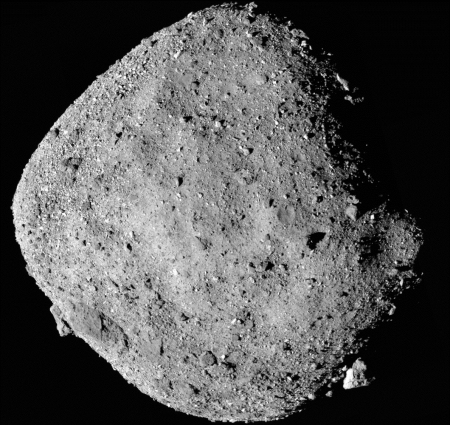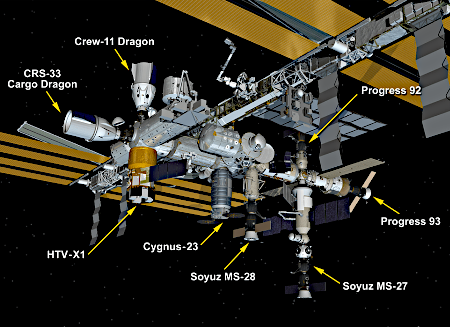
The Tiangong-3 station, as presently configured,
with two Shenzou capsules docked at either end.
Having successfully docked Shenzhou-22 as a lifeboat to its Tiangong-3 space station last week, China’s state-run press yesterday outlined its plans for the damaged Shenzhou-20 capsule that is still docked to the station but cannot be used by its crew because of cracks in one viewport.
First, China’s space operations have decided to attempt a return of the capsule back to Earth, unmanned, so the damage can be inspected in greater detail. Before that happens however the astronauts on board the station will do their own inspection, including the possibility of adding a patch.
During a subsequent spacewalk, the Shenzhou-21 crew, who are now undertaking a six-month orbital stay, may be tasked with inspecting the cracked viewport. They may also perform protective work on it using specialized devices delivered by the Shenzhou-22 launch — a procedure still being validated in ground tests, said Ji in a recent CCTV interview.
A day prior to their planned return on Nov. 5, the Shenzhou-20 crew spotted an anomaly on the viewport’s edge — a triangular, paint-like mark. They photographed it from multiple angles and under different lights, while the station’s robotic arm cameras were employed to take supplemental external pictures.
The flaw was later identified as “penetrating cracks,” said Jia Shijin, chief designer of the crewed spaceship system from China Academy of Space Technology. “The space debris responsible is preliminarily judged to be less than a millimeter in size, but struck with extremely high speed.”
This description of the damage is the most detailed China as yet revealed. These details certainly fit the description of an impact from an outside source, though considering China’s general lack of transparency some skepticism should still be retained. For example, we still do not know if these “penetrating cracks” mean the capsule is no longer holding its atmosphere, or if the crew has closed the capsule’s hatch to keep the air loss to a minimum.
Either way, it appears China’s engineers are concerned that this damage could cause a major break-up of the capsule during re-entry, and are thus considering options for covering it during that return.
















